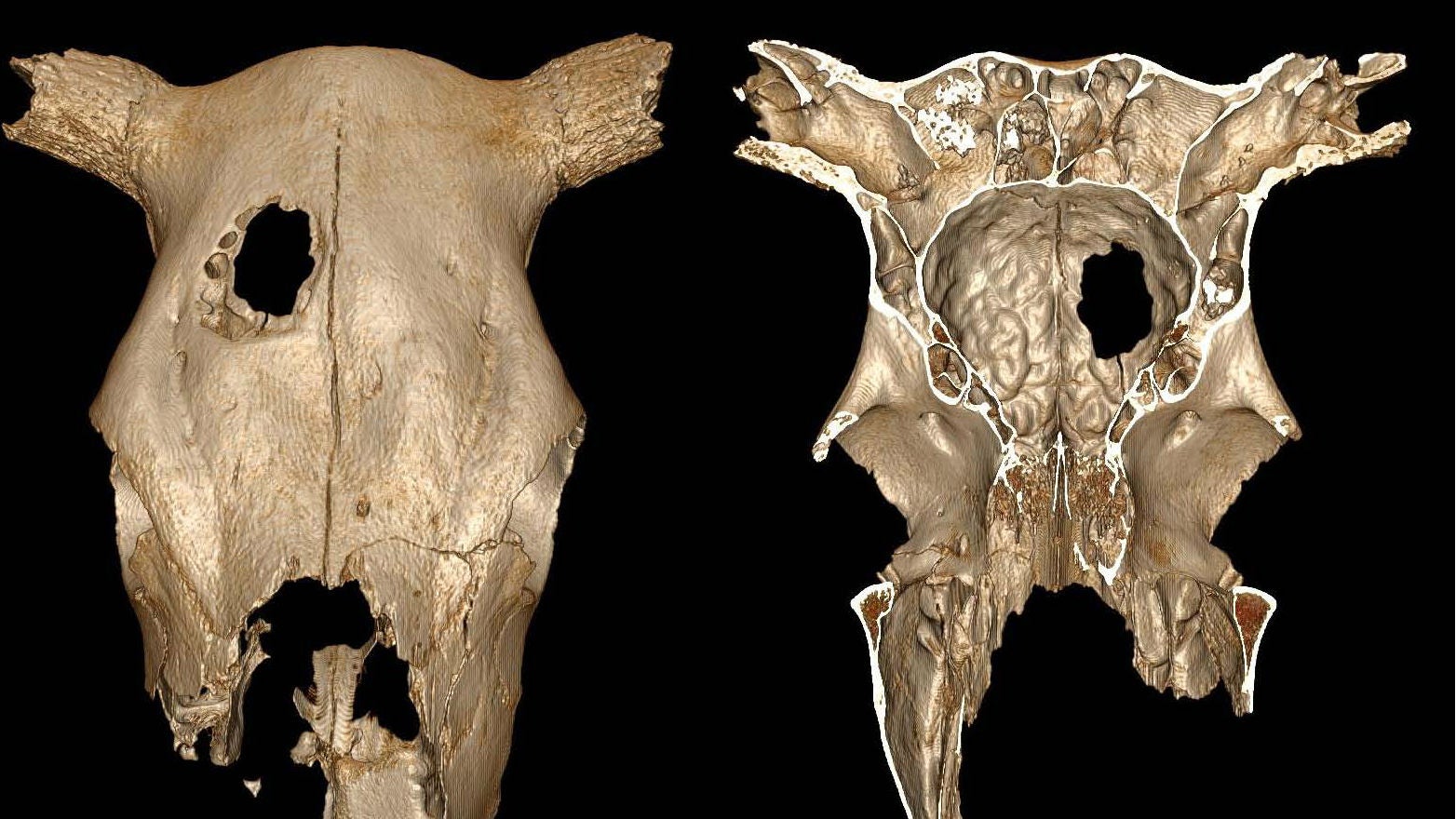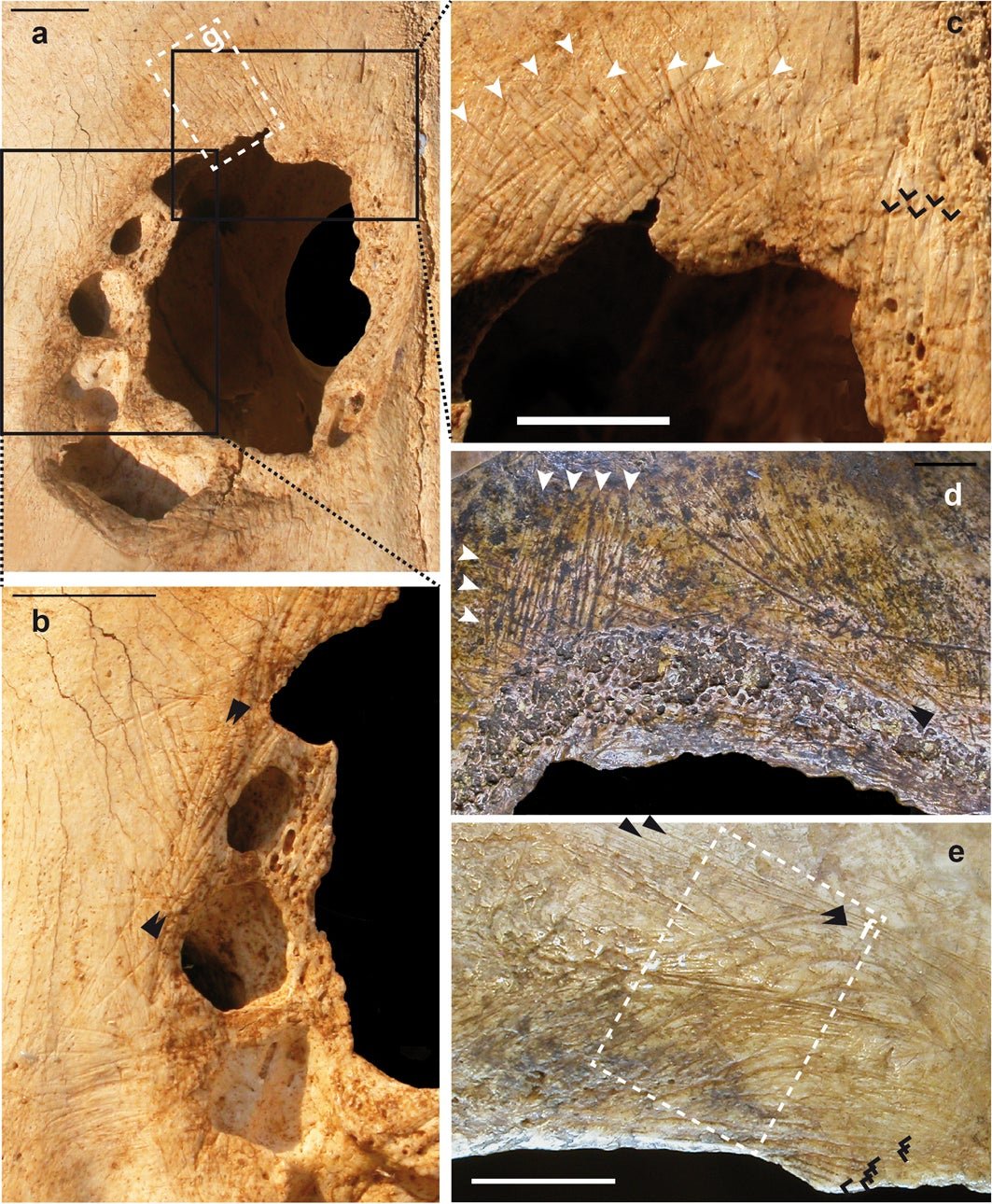A 5,400 year-old cow skull reveals the popularity of a bizarre ancient surgery
Of all the questionable fads in human history, trepanation is perhaps the most perplexing.


Of all the questionable fads in human history, trepanation is perhaps the most perplexing.
Trepanation, or the practice of drilling holes in our skulls, dates back to the Neolithic period, some 10,000 years ago. Archaeologists have found skulls from sites ranging from France to Peru marked by extra holes with clean, chiseled edges. They don’t seem to be the result of trauma, and the way the bone appears to have healed suggests the holes were made while these people were alive.
But even though archeologists found the first of skulls over 300 years ago, they still have no idea why the old braincases have these bizarre holes, and the mystery keeps growing. In a paper published today (April 19) in Nature Scientific Reporters, researchers found evidence of the same type of hole in a cow skull. According to the authors, this suggests people were actually practicing trepanation on some of their animals before moving on to their peers.
About a decade ago, Fernando Ramírez Rozzi, a paleontologist focusing on human remains at the French National Center for Scientific Research, was approached by a colleague, who asked that he examine a strange cow skull. Researchers had excavated it from a site in central France in the late 1970s, and dated it between 5,000 and 5,400 years old, but couldn’t agree on why it had a hole. Rozzi, working with Alain Froment, an anthropologist at the Museum of Mankind in Paris, used advanced imaging techniques to compare the cow skull to human skulls with similar holes.
They found that the hole in the cow skull is too precise to be the result of battle with another animal, and there’s no evidence of other blunt trauma. In addition, says, Rozzi, it appears to have been made using similar techniques as the holes in human skulls.
But why?

In their study, Rozzi and Froment suggest a few possible answers. It could be that farmers were trying to save the animal from some sort of brain disease, like seizures. “As early as the Neolithic period, these kinds of symptoms were already linked to brain physiology,” the authors write. Perhaps Neolithic humans thought cutting a hole in the head would release some sort of troubling pressure in the brain. (This isn’t a bad idea: to this day, neurosurgeons treat excess swelling in the brain due to an illness, injury, or surgical procedures by removing part of the skull in order to prevent permanent brain damage.) If this were the case, it would be some of the oldest evidence of veterinary surgery.
However, there’s further evidence to suggest otherwise. At this particular site, archaeologists have found the remains of hundreds of cows—but only one had the strange hole. Presumably, if just one cow were sick, there would be no need to perform surgery to save her because she would have been easily replaceable, Rozzi says. And if there was an epidemic, there would have been many surgically altered skulls at the site.
A second theory is that this was part of a ritual. However, the researchers dismiss this, too. Though there are rituals in cultures in other parts of the world involving animals, the study authors argue that this was not a case of religious or cultural ceremony because, they write, it “would have had greater value, practical or symbolic, if performed on a human being rather than on a common animal.”
In Rozzi’s opinion, the best bet is that this cow was practice for someone who was hoping to one day work on the skulls of living humans. Anthropologists have put forth theories that, in some cultures, our human ancestors believed trepanation could alleviate headaches, mental illness, or possession by spirits. But finding test subjects was tricky. Cadavers were no good, because they don’t swell or bleed like the living, and more importantly can’t articulate how they feel. Cows—and pigs, whose skulls have been found with similar holes—could serve as more adequate practice tools, and a nice meal when the practitioner was finished.
These days, excluding a handful of medical circumstances, trepanation is ill-advised. But who knows? Maybe one day 10,000 years from now our descendants will look back on some of today’s wellness trends with the same perplexed wonder as we view those of our ancestors.